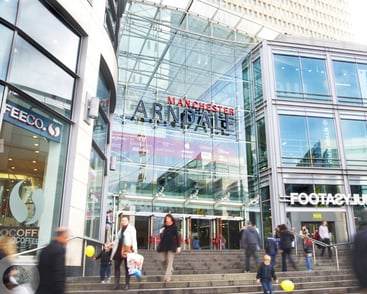Buildings are responsible for 30% of global energy consumption and 27% of global energy emissions, and overall building energy consumption in the twilight of the COVID-19 pandemic has rebounded to higher levels than in 2019. (source: https://www.iea.org/topics/buildings).
ep&t global specialises in optimising large buildings through ongoing monitoring and reporting via our EDGE Intelligent System. Capable of integrating with energy, water, control and weather information systems, our advanced analytics tools and expert engineers will ensure that regardless of your
For those who are early in their optimisation journey, here are some recommendations for larger commercial buildings to help reduce their energy and water usage.
-
Introduce ongoing monitoring of the asset: commercial buildings are ever-changing and unique assets. With more and more compliance and regulatory requirements being passed down to the site team managing each asset, time to monitor and optimise all facets of the asset is less and less available. Rather than expand operational headcount and the overheads that entails, bring in experts with a defined scope of works to ensure that regardless of the current state of play, your asset is running at it's best.
-
Implement water-saving measures: Commercial buildings use large amounts of water for restrooms, kitchens, and cooling systems. Implementing water-saving measures can significantly reduce water usage and costs. This may include installing low-flow toilets and faucets, fixing leaks promptly, and using recycled water for non-potable purposes like landscaping and cooling towers.
-
Switch to renewable energy: Consider installing solar panels or wind turbines to generate renewable energy on-site. This can significantly reduce the building's reliance on fossil fuels and lower energy costs over time. Additionally, many governments offer incentives and subsidies for businesses that invest in renewable energy.
-
Use smart technology: Smart building technology can help automate and optimise energy usage. For example, smart lighting systems can automatically adjust brightness based on natural light levels. Additionally, well tuned building automation systems can monitor and optimise energy usage in real-time, alerting site teams to any inefficiencies or equipment malfunctions.
-
Encourage employee engagement: Engage employees and tenants in energy and water conservation efforts. Educate them on the benefits of resource conservation and encourage them to adopt sustainable practices like turning off lights and equipment when not in use, using reusable water bottles and coffee cups, and carpooling or using public transportation.
In conclusion, reducing energy and water usage in larger commercial buildings is a crucial step in achieving a sustainable future. By implementing these recommendations, businesses can not only save money on utility bills, but also contribute to a healthier and more sustainable planet.




